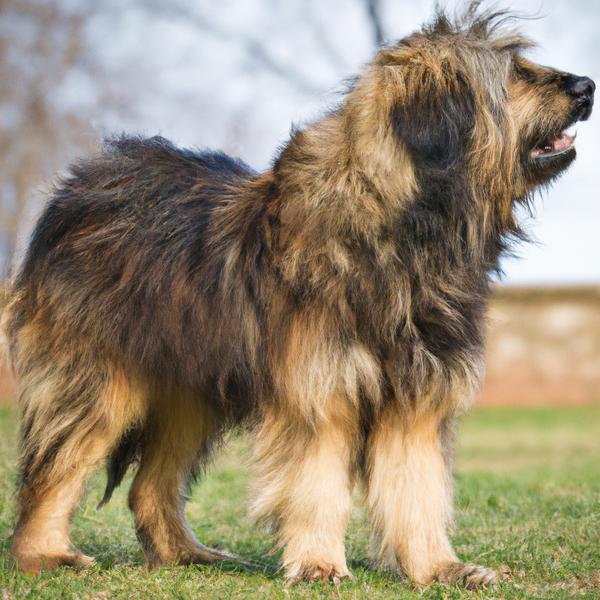Crestoxie vs. Papillon: Breed Differences and Similarities
Hypoallergenic
Are Crestoxies or Papillons hypoallergenic, or neither?
Unfortunately, neither Crestoxie nor Papillon are hypoallergenic, which may not make them the best choice for dog lovers who suffer from pet allergies.
Temperament
What are the personalities of Crestoxie and Papillon dogs?
Playful
Stubborn
Happy
Alert
Courageous
Affectionate
Devoted
Lively
Tempered
Sweet
Clever
Alert
Friendly
Energetic
Happy
Intelligent
Shedding Level
Do Crestoxies shed more than Papillons, or which breed sheds more, Crestoxies or Papillons?
Crestoxie or Papillon will shed a negligible amount of hair. Some owners say that they do not shed, but that is not true. But the amount of shedding can be rather light than other dog breeds. If you do not want to deal with the hairs flying around in your home, then this breed is a perfect choice for you.
Watchdog Ability
Which dog breed makes a better watchdog, the Crestoxie or Papillon?
Crestoxies make excellent watchdogs - they're vocal and protective of their territory.
Papillons are decent watchdogs - they'll alert their owner if something seems amiss.
Ancestry
What are the origins of Crestoxie and Papillon breeds?
Chinese Crested, Dachshund
spitz, spaniel
Date of Birth
When were Crestoxie and Papillon breeds first developed?
Unknown
1500
Litter Size
What is the usual litter size for Crestoxie and Papillon?
A Crestoxie can have a litter of 4-8 puppies on average. However, it's worth noting that the size of the litters can vary greatly. Factors that can influence litter size include the health of the mother, breeding history, and genetics.
A Papillon can have a litter of 13-16 puppies on average. However, it's worth noting that the size of the litters can vary greatly. Factors that can influence litter size include the health of the mother, breeding history, and genetics.
Adaptability
Crestoxies are known for their adaptability and can adjust well to different environments and lifestyle changes.
Papillons are highly adaptable and versatile, making them excellent companions for families and individuals of all lifestyles.
Health Issues
Between Crestoxie and Papillon, which breed is more prone to health problems?
Crestoxie and Papillon breeds are generally considered to be healthy. However, like all breeds, they are susceptible to certain health issues and it is important to keep an eye out for them and address them with your veterinarian as needed.
Major Concerns
What are the major health concerns for Crestoxie and Papillon breeds?
Intervertebral Disc Disease
Allergies
Eye Problems
Acanthosis Nigricans
Ehlers-Danlos Syndrome
Patellar Luxation
Deafness
Hip Dysplasia
Mitral Valve Disease
Minor Concerns
What minor health issues should be kept in mind when owning Crestoxie and Papillon?
Deafness
Urolithiasis
Progressive Retinal Atrophy
Cataracts
Von Willebrand's Disease
Follicular Dysplasia
Occasional Tests
What occasional tests are recommended for Crestoxie and Papillon breeds?
Eye
Spine
X-Rays
Eye Examination
Skin Evaluation
Knee
Heart
Dna For Vwd
Hips
X-Rays
Eye Examination
Physical Examination
Energy
How do the energy levels of Crestoxies and Papillons compare?
Crestoxies are a good choice for a low-key lifestyle due to their low energy levels.
Papillons' high energy levels make them unsuitable for a low-key dog, choose accordingly.
Social Needs
Crestoxie vs Papillon social needs comparison
Crestoxie and Papillon have very high social needs. These needs include regular mental and physical stimulation, a job or purpose, and companionship. They thrive in environments where they have a lot of interaction with humans and other dogs.
Exercise Needed
Crestoxie vs Papillon exercise need comparison.
Crestoxies need only a small amount of physical activity, ideal for busy or elderly people or those with limited space.
Papillons need high physical activity and are ideal for active individuals, but not suitable for sedentary lifestyles or small apartments.
Sleeping Need
Which of the two sleeps the most/least: Crestoxie or Papillon?
Crestoxies are known for their relaxed and calm nature and enjoy long periods of sleep.
Papillons sleep less than other breeds but still need adequate sleep for good health.
Tendency to Bark
Do Crestoxies or Papillons bark more/less frequently?
The Crestoxie is a vocal breed that frequently barks and howls, and may not be suitable for those seeking a quiet companion.
Papillon dogs bark and howl frequently and are not recommended for quiet homes.
Mouthiness
Mouthiness Comparison: Crestoxie vs Papillon?
Roaming urge
Crestoxie vs Labrador: Running away tendency?
Prey Drive
Crestoxie or Papillon - which breed has a higher level of prey drive?
Past times
What are some enjoyable activities and ways to keep Crestoxie and Papillon entertained?
Go to Beach, Running, Walking, Catch
Walking, Playing, Walk, Sniffing, Catch treats, Off-leash, Chasing Animals, Eating Snacks, Nap
Tolerance of being left alone
Grooming
Which breed is easier to maintain in terms of grooming, Crestoxies or Papillons?
Crestoxie and Papillon are breeds of dogs that require an average amount of grooming effort.
Intelligence
Comparing Intelligence: Crestoxies vs Papillons
Crestoxies are average in obedience intelligence but have a high IQ and may cause trouble if left unsupervised.
Papillon is highly intelligent and very trainable.
Sensitivity Level
How do Crestoxie and Papillon compare in sensitivity?
This breed is sensitive to its environment and best suited for patient and understanding families with a consistent routine.
Papillons have average emotions and adapt well to different situations.
Affection Dependance
Which is the more affectionate dog breed: Crestoxie vs Papillon?
Apartment Friendly
Which breed is more apartment-friendly: Crestoxie or Papillon?
Crestoxies make excellent apartment dogs, being fairly active indoors and not requiring a yard.
Papillons are good apartment dogs as long as they get enough exercise and stimulation outside of the apartment.
Child Friendly
Do Crestoxies or Papillons have a friendlier temperament towards children?
Crestoxies have an average level of friendliness towards children.
Papillons are good with kids if socialized and trained from a young age.
Senior-friendly
Which dog is more suitable as a pet for the elderly - Crestoxie or Papillon?
Cat Friendly
Do Crestoxie or Papillon breeds have a better compatibility with cats?
Crestoxies are good with cats, but early training is needed to prevent chasing behavior.
Papillons are very friendly with cats and make great companions for them.
Dog Friendly
Which breed is more sociable with other dogs: Crestoxie or Papillon?
Crestoxies are average in their friendliness towards other dogs, and socialization can help.
Papillons are less friendly towards other dogs, but can improve with socialization.
Pet friendly
How do Crestoxie or Papillon dogs interact with other pets?
Stranger Friendly
Which breed is more friendly with strangers: Crestoxie or Papillon?
Crestoxies are averagely friendly around strangers but benefit from early socialisation.
Papillons are highly friendly around strangers.
Playfulness
Which breed is more playful between Crestoxie and Papillon?
Crestoxies have an average level of playfulness, enjoying playtime like most dogs but not excessively so.
Papillons are very playful, so adopting an older one might be a better option for a more relaxed experience.
Trainability
How do the trainability levels of Crestoxies and Papillons compare?
Crestoxie and Papillon dogs are known for their ease of training and ability to learn quickly, making them a popular choice for pet owners and trainers alike.
Compare Crestoxie with other breeds

Shepadoodle
Crestoxie vs Shepadoodle

Puggat
Crestoxie vs Puggat

Mucuchies
Crestoxie vs Mucuchies

Torkie
Crestoxie vs Torkie

Papillon
Crestoxie vs Papillon

Italian Tzu
Crestoxie vs Italian Tzu

Tibetan Wolfhound
Crestoxie vs Tibetan Wolfhound

Golden Irish
Crestoxie vs Golden Irish

Mini Scottish Fox Terrier
Crestoxie vs Mini Scottish Fox Terrier

Sharberian Husky
Crestoxie vs Sharberian Husky

Clumber Lab
Crestoxie vs Clumber Lab

Borzoi
Crestoxie vs Borzoi
